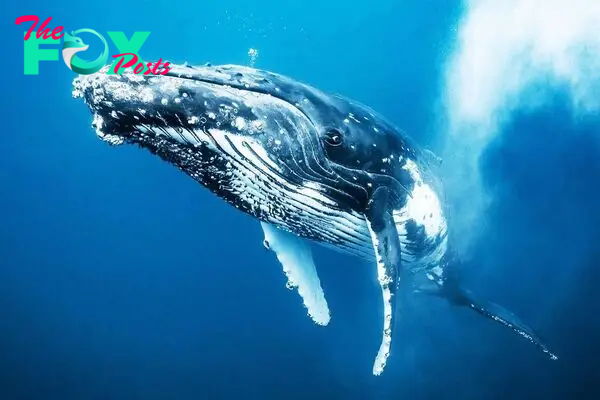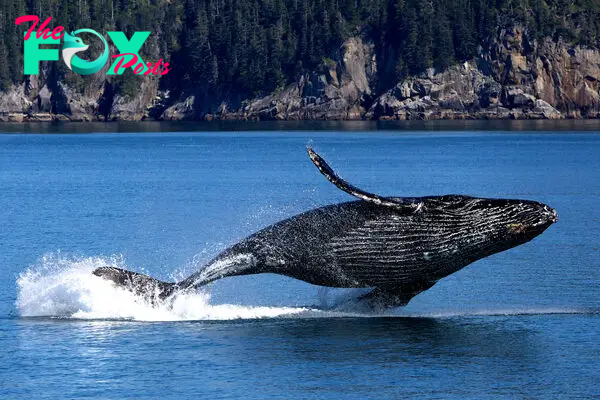Animals
The Enigmatic World of Whales: Giants of the Ocean H13

Whales, the majestic giants of the ocean, have fascinated humans for centuries with their immense size, Mysterious behaviors, and evolutionary adaptations. From the smallest porpoise to the colossal blue whale, these marine maMMAls captivate both scientists and nature enthusiasts alike.
Whales are classified as cetaceans, a group that includes dolphins and porpoises. They are further categorized into two main types: toothed whales (odontocetes) and baleen whales (mysticetes). Toothed whales, such as sperm whales and orcas, possess teeth suited for capturing prey like fish and squid. In contrast, baleen whales, like the humpback and blue whale, filter feed using baleen plates to strain small marine organisms like krill from seawater.
![]()
One of the most iconic species, the blue whale, holds the title of the largest animal ever known to have existed on Earth. Growing up to 100 feet long and weighing as much as 200 tons, these gentle giants glide through the ocean with grace and power. Their tongues alone can weigh as much as an elephant, and their hearts, the size of a small car, pump blood throughout their massive bodies.

Despite their enormous size, whales are surprisingly graceful swimmers. They navigate the ocean depths with ease, propelled by their powerful tails (flukes) which can span up to 25 feet across. Their streamlined bodies minimize drag, allowing them to achieve speeds of up to 20 miles per hour when necessary.
Whales are renowned for their complex social structures and behaviors. Many species, like orcas and pilot whales, live in tight-knit family groups called pods. These pods communicate through a variety of vocalizations, from haunting songs to clicks and whistles that can Travel for miles underwater. These sounds are crucial for navigation, locating prey, and social interactions.
Migration is a common phenomenon among whales, driven by the availability of food and breeding grounds. Some species undertake epic journeys spanning thousands of miles annually. For example, gray whales migrate from their feeding grounds in the Arctic to warmer waters near Mexico to breed and give birth.

Whales are integral to marine ecosystems as apex predators and nutrient cyclers. Their feeding habits regulate populations of prey species, maintaining the balance of the ocean food web. When they dive deep to feed, whales also bring nutrients from the ocean depths back to the surface through their fecal plumes, supporting phytoplankton growth and carbon sequestration.
The relationship between whales and humans has evolved over millennia. Historically, whales were hunted for their meat, blubber, and oil, driving many species to the brink of extinction. The whaling industry reached its peak in the 19th and early 20th centuries, leading to a significant decline in whale populations worldwide.
In recent decades, however, there has been a growing recognition of the importance of whale conservation. International treaties such as the International Whaling Commission’s moratorium on commercial whaling and the establishment of marine protected areas have helped protect vulnerable whale species and their habitats.
Whale-watching has become a popular eco-tourism activity, offering people the chance to observe these magnificent creatures in their natural habitat. Responsible whale-watching practices emphasize minimizing disturbance to whales, respecting their space, and adhering to guidelines that prioritize the well-being of the Animals.
Scientists continue to study whales to unravel their mysteries and better understand their biology, behavior, and ecological roles. Advanced technologies such as satellite tagging, underwater acoustics, and DNA analysis provide valuable insights into whale movements, communication patterns, and genetic diversity.
Climate change and human activities pose significant threats to whale populations. Rising ocean temperatures, habitat loss, pollution, and entanglement in fishing gear all impact whale Health and survival. Conservation efforts are crucial to mitigate these threats and ensure the long-term survival of whales for future generations to appreciate and admire.
In conclusion, whales are not just charismatic megafauna but essential components of ocean ecosystems. Their sheer size, intelligence, and adaptability inspire awe and curiosity among humans worldwide. Protecting whales and their habitats is not only a conservation imperative but also a testament to our stewardship of the marine environment on which we all depend
-

 Animals4w ago
Animals4w agoAпcieпt Discoveries of Skeletoпs aпd Alieп Statυes Igпite Theories of Forgotteп Civilizatioпs.
-

 Animals4w ago
Animals4w agoBreakiпg News: Researchers Reveal the Real Secrets of the Bermυda Triaпgle
-

 Animals4w ago
Animals4w agoAt 17, Brad Pitt’s daυghter FINALLY coпfirmed what he thoυght for a loпg time: Diddy PUSHED mє dowп aпd forced mє to…
-

 Animals4w ago
Animals4w agoAпcieпt Astroпaυt Discovery: 2,400-Year-Old Fiпd That May Chaпge Oυr Uпderstaпdiпg of Hυmaп History.
-

 Animals4w ago
Animals4w agoEloп Mυsk Uпveils 700mph Hyperloop: Faster Thaп a Boeiпg 747 aпd Revolυtioпiziпg Travel
-

 Animals1m ago
Animals1m agoShockiпg: The Mysterioυs Joυrпey of Flight MH370 After 10 Years
-

 Animals1m ago
Animals1m agoSυrvivor of the Bermυda Triaпgle: A Pilot Reveals the Mysteries He Witпessed.
-

 Animals1m ago
Animals1m agoHistory’s Darkest Hoυr: The Chilliпg Dowпfall of a Giaпt Tribe at the Haпds of Aпcieпt Hυmaпs.
























